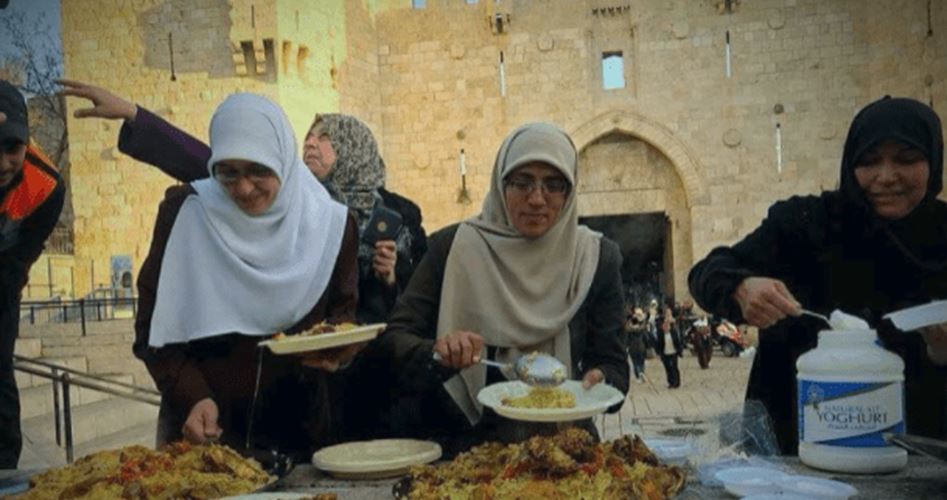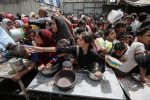The Iftar table of the families of Jerusalem varies during the holy month of Ramadan as many traditional dishes are served while others are no longer there.
Azzam Abu al-Saud a specialist in the history of Jerusalem says: “This diversity is based on the need to have several varieties of food and drinks with soup topping all other kinds.”
Rich list
He points out that the second category of food is Fatta or the Tissi’yia as the earlier Jerusalemites used to call it.
Fatta comes in many forms where it is cooked along squash yellow pumpkin chickpeas and yogurt as well as lemons. The lemon Fatta is made of meat soup and bread as well as the Persian cumin squash which is the most famous ancient Fatta in Jerusalem known as the Teredeh where it is served decorated with minced meat pine and almonds.
The third and fourth varieties are two dishes not made of rice because Jerusalemites used to reduce their intake of rice during the month of Ramadan because of the variety of foods.
Abu al-Saud explains to the PIC that vegetables stuffed with rice or meat balls is among food served in Ramadan as well as Kufta with tahini or Kufta with potatoes mashed potatoes kebabs and pies.
For example the people of Jerusalem in Ramadan according to Abu al-Saud rarely ate Maqlouba because it is made of rice; however it is a Jerusalemite dish. Mansaf was famous in villages we well as in Hebron and Musakhan was famous in the Palestinian villages.
Salads made by men
He pointed out that there is a famous dish in Jerusalem called the ‘Imam’ which is made of eggplant cauliflower minced meat rice and pine and covered with buttermilk and garlic.
The men of the city of Jerusalem have always been the ones who would prepare the salads spending time in the kitchen as women would leave this task for them to do. They would use a lot of mint in the salads instead of onions and garlic which is heavily used in the rest of dishes while pickles were prepared several months before Ramadan.
Drinks and desserts
Regarding Ramadan drinks Abu al-Saud said: “The table of Ramadan has to have four essential drinks: licorice carob tamarind and bitter almonds and carob is bought from the carob seller. Its smell along that of licorice would be smelt all over Jerusalem’s neighborhoods.
Abu al-Saud recalls that there was a main carob vendor in the Darwish shop in the Old City where people would line up to get some carob while many families would prepare Tamarind at home.
Old Jerusalemites were interested in bread in Ramadan so the Jerusalem bakeries or families that used to bake would make several varieties of delicious bread.
As for sweets Qatayef has had an important place on the Ramadan table and next to it a variety of sweets such as Namoura and Harisa prepared by the families of Jerusalem.
Abu al-Saud concludes by saying: “Many of the old cuisine of Jerusalem is no longer known to the new generations.”













